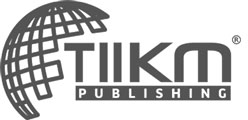AN IMPROVED DESIGN OF A SOYBEAN PEEL SEPARATOR FOR TEMPE PRODUCTION
DOI:
https://doi.org/10.17501/2682728X.2020.1102Keywords:
contamination, peeling process, reverse engineering, soybean, tempeAbstract
Tempe is a typical food of Indonesia which is consumed by people throughout the world. Tempe is made of fermented soybean by Rhizopus sp. The production of tempe is labor intensive. Among the twelve core stages in tempe production. One of that is separating the peel of soybean which is performed by human energy. It is hard to make contamination-free tempe since manual operation is involved in the process. This research was conducted by reverse engineering method with the aim to redesign an existing soybean peeling separator base on the user needs. The cycle time of whole tempe production to detect the problem were calculated. The longest time is peel separating process which use 40% from the whole tempe production. This station will be examined deeply an calculated per work elements and classify these elements to be the criterion of the developed machine. These criterion generate various design concepts, then each design will be chosen using scoring concept, screening concept, and feasibility to be realized. The results revealed that, the newly designed peel separator decreased the processing time by 39%, which decrease the risk of contamination by manual operator. In addition to that, the reduction of cycle time was decreased the water and electricity use of tempe production.
References
Alai Shashank, 2013, A Review of 3D Design Parameterization Using Reverse Engineering. International Journal of Emerging Technology and Advanced Engineering, pp. 171-179. ISSN: 2250-2459
Angelillo I., Viggiani N., Rizzo L., Bianco A., 2000, Food Handlers and Foodborne Diseases: Knowledge, Attitudes, and Reported Behavior in Italy. Journal of Food Protection, pp. 381-385. DOI: https://doi.org/ 10.4315/0362-028x-63.3.381
Azeke M., Fretzdorff B., Buening-Pfaue H., Betsche T., 2017, Comparative Effect of Boiling and Solid Substrate Fermentation Using the Tempe Fungus (Rhizopus oligosporus) on the Flatulence Potential of African Yambean (Sphenostylis stenocarpa L.) Seeds. Food Chemistry, pp. 1420-1425. DOI: https://doi.org/10.1016/j.foodchem.2006.10.058
Bici M., Cardini V., Eugeni M., 2018, Digital Design of Medical Replicas via Desktop Systems: Shape Evaluation of Colon Parts. Journal of Healthcare Engineering, pp. 1-10. DOI: 10.1155/2018/3272596
Buonamici Francesco, Carfagni Monica, Furferi Rocco, Governi lapo., Lapini A., Volpe Y., 2018, Reverse Engineering of Mechanical Parts: A Template-based Approach. Journal of Computational Design and Engineering, pp. 145-159. DOI: https://doi.org/10.1016/j.jcde.2017.11.009
Hadid N. A., Kusnayat A., Rahayu M., 2017, Redesign of Animal Feed Raw Material Container Using Reverse Enginnering Method to Reduce Work Accident Risks. e-Proceeding of Engineering, pp. 2720-2730. ISSN: 2355-9365
Kadariya J., Smith T., Thapaliya D., 2014, Staphylococcus aureus and Staphylococcal Food-Borne Disease: An Ongoing Challenge in Public Health. Hindawi Publishing Corporation, pp. 1-9. DOI: 10.1155/2014/827965
Kameda T., Aoki H., Yang Y., Nirmagustina D. E., Iwamoto A., Kumrungsee T., Kato N., Yanaka N., 2018, Beneficial Effects of Dietary Tempe Prepared with Rhizopus stolonifer on Liver Function in Rats Fed with a High-Fat Diet. Journal of Nutritional Science and Vitaminology, pp. 379-383. DOI: https://doi.org/10.3177/jnsv.64.379
Turpin Lonnie, 2018, A Note on Understanding Cycle Time. International Journal of Production Economics, pp. 1-19. DOI: https://doi.org/10.1016/j.ijpe.2018.09.004
Kim Sukwon, 2017, Time and Motion Study Methods for Manufacturing a Pump. International Journal of Innovative Research in Computer Science & Technology (IJIRCST), pp. 390-392. DOI: https://doi.org/10.21276/ijircst.2017.5.6.2
Kusnayat A., Martini S., Shabrina E., Rizal A., 2018, Application of Reverse Engineering for Modified Anchor Impeller. World scientific news, pp. 14-23. EISSN: 2392-2192
Raja V., 2008, Introduction to Reverse Engineering. In: Reverse Engineering: An Industrial Perspective, edited by Raja V., Fernandes K. J., Springer Series in Advanced Manufacturing, vol. 1(London: Springer-Verlag), pp. 1-9. ISBN-13: 9781846288555
Reddy G. S., Hussian M., Rao K. S., 2016, Latest Research on Reverse Engineering Technology: Review. Proceedings of the International conference on Paradigms in Engineering & Technology (ICPET2016).
Sinha S., Seneviratne P., 1996, Part to Art. In: Reverse Engineering, edited by Hoschek J., Dankwort W., (Stuttgart: Teubner), pp. 7-18. DOI: https://doi.org/10.1007/978-3-322-84819-2
Ulrich K. T., Eppinger S. D., 2000, Product Design and Development 2nd Edition (Singapore: McGraw-Hill). ISBN-13: 978-0073404776
Wood K. L., Jensen D., Bezdek J., Otto K. N., 2001, Reverse Engineering and Redesign: Courses to Incrementally and Systematically Teach Design. Journal of Engineering Education, 1 (2001) 363-374. DOI: 10.1002/j.2168-9830.2001.tb00615.x







